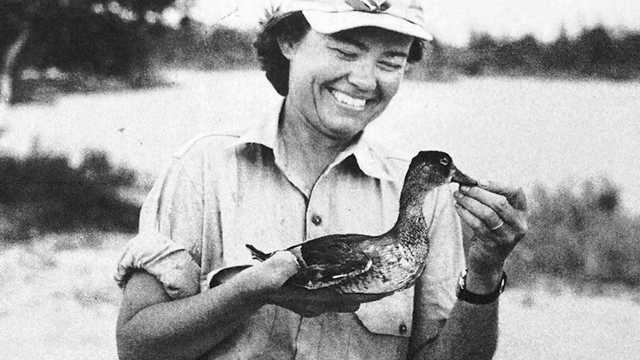Celebrating Women’s History Month at Seney National Wildlife Refuge – Elizabeth Browne Losey
In America, every March has been designated Women’s History Month by presidential proclamation every year since 1982. The month is set aside to honor women’s contributions in American history.
There have been many women who have played a significant role in the stewardship of Seney National Wildlife Refuge. One in particular, Elizabeth Browne Losey, helped pave the way for generations of girls and women in biological research and natural resources.
Her story deserves more attention and we hope to share more with you in a future issue but for now, here is an excerpt from the USFWS archives.
“Many people have not heard of Elizabeth B. Losey, “Betty” to her friends, but she played an important role in the history of conservation in the United States. When Mrs. Losey graduated from the University of Michigan with a master of science degree in wildlife management and conservation in 1947, it was deemed unsuitable for women to work and stay overnight in the field. She changed that when the US Fish and Wildlife Service hired her as a waterfowl research biologist at Seney National Wildlife Refuge outside Seney, MI. Although she only worked at Seney for three years, Mrs. Losey became the first female research biologist in the country.
Seney Refuge applied scientist Greg Corace recalls her “willingness to think on her own. When she was working here, she would go to the field with men to do surveys and she was ridiculed. Her passion for what she did drove her to overcome social norms. Betty was a leader in the way she thought and acted and held herself.”
Born in East Orange, New Jersey in 1912, Mrs. Losey graduated high school in Lynn, Massachusetts before earning her bachelor’s degree in 1934 and her master’s degree in 1946 from the University of Michigan. From there, she started her job at Seney studying duck brood behavior, living in a sparsely furnished cabin on the refuge. She also worked as a part-time research assistant for the University of Michigan School of Natural Resources from 1946 to 1952.
Mrs. Losey became an accomplished writer in her lifetime and wrote two books. The first, Let Them Be Remembered: The Story of the Fur Trade Forts, published in 1999, tells the story of the Hudson Bay Company and the fur trade in Canada in the late 1600s.
The second, Seney National Wildlife Refuge: its story, published in 2003, recounts the history of the Seney National Wildlife Refuge. Over her lifetime, she wrote several technical reports and miscellaneous publications relating to birds and mammals indigenous to the Upper Peninsula of Michigan, including “The Importance of Beaver in Waterfowl Management at the Seney National
Wildlife Refuge” in 1953 and “Duck Brood Behavior at the Seney National Wildlife Refuge” in 1964.
At the age of 92, she wrote her final peer-reviewed paper on the history of sharp-tailed grouse at the Seney National Wildlife Refuge, published posthumously in 2007 in the journal The Passenger Pigeon. Before her death, Mrs. Losey compiled many of her works and personal papers and donated them to the Upper Peninsula and Northern Michigan University Archives in Marquette, MI.
Although she only worked at the Seney National Wildlife Refuge from 1947 to 1950, Mrs. Losey continued to live in the area at least part-time until her death in 2005 at the age of 93. When her husband, Everett, died in 1996, Mrs. Losey returned to the Seney National Wildlife Refuge as a volunteer, calling herself a biological historian.
In 2003 the National Wildlife Refuge Association named her Volunteer of the Year.
This spotlight article appeared in the March 2023 issue of The Trumpeter, a newsletter produced by Friends of the Seney National Wildlife Refuge.







